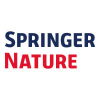2 Phd Students and a Postdoctoral Researcher in - Karlsruhe, Deutschland - Springer Nature
Beschreibung
2 PhD students and a Postdoctoral Researcher in Superconducting Qubits:
- Employer
- Helmholtz Association of German Research Centres
- Location
- Karlsruhe
- Closing date
- 1 Apr 2024
- Discipline
Job Type
Postdoctoral
Employment - Hours
Part time
Duration
Fixed term
Qualification
PhD
Sector
Academia- You need to sign in or create an account to a job.
- Job Details
- Company
Job Details:
Area of research:
Scientific / postdoctoral posts
Part-Time Suitability:
The position is suitable for part-time employment.
Starting date:
Job description:
We are looking for highly motivated scientists to work on experiments with superconducting qubits.
These positions will be funded by the European Research Council (ERC) through the Advanced Grant "Millimeter-Wave Superconducting Quantum Circuits" - Milli-Q.
The goal is to develop novel superconducting quantum circuits which are operating at frequencies one order of magnitude larger than those demonstrated until now, going up to the 100 GHz frequency range, introducing numerous advantages, including:- Higher operating temperature, resulting with more qubits per fridge,
- Smaller size decreases wafer sensitivity to cosmic radiation.
Due to the increased qubit energy level separation, millimeter-wave quantum processors could be operated at temperatures much higher than their present counterparts, qubit logic gates can be performed faster and circuit components reduced in size thus allowing for a smaller footprint, denser packaging and better integration.
These numerous potential advantages face many challenges and pose intriguing physics questions that are aimed to be answered in this project.
Once successful, our approach will open a new way to build superconducting quantum computers.The group led by Prof.
Alexey Ustinov is located at the university campus of KIT and has a long successful record of exploring the physics of superconducting circuits, both classical and quantum.
We are using superconducting qubits for state-of-the-art experiments, challenge new physics questions and explore opportunities for the next generation of quantum information processing.
Our group pioneered frequency domain multiplexing readout of qubits, detection and manipulation of microscopic two-level defects, and studied qubit arrays as quantum metamaterials.
Our labs are equipped with 6 dilution refrigerators and microwave and mm-wave measurement facilities. We have full access to the in-house cleanroom located next to the lab at Nanostructure Service Laboratory / KIT.
The multiple offered PhD and postdoc positions cover a broad range of directions within Milli-Q project, ranging from the development of cryogenic measurements for mm-wave frequencies to the fabrication of prototype mm-wave qubits and studies of their quantum coherence properties.
Our project team will closely cooperate with mm-wave experts and high-frequency electrical engineers, both on and outside the KIT campus.
- This research center is part of the Helmholtz Association of German Research Centers. With more than 42,000 employees and an annual budget of over € 5 billion, the Helmholtz Association is Germany's largest scientific organisation._
Company:
The Helmholtz Association contributes to solving major challenges to assure the future of our society.
With more than 39,000 people on staff in 18 national research centres, the Helmholtz Association is Germany's largest scientific organization.
The name Helmholtz stands for concerted research in which networks form the key principle behind inquiring thought and action. Concerted research is efficient and flexible.The profile of the Helmholtz Association
The Helmholtz Association performs cutting-edge research which contributes substantially to solving the grand challenges of science, society and industry.
To succeed in meeting these responsibilities, Helmholtz concentrates its work in six research fields:
Energy, Earth and Environment, Health, Key Technologies, Matter, as well as Aeronautics, Space and Transport. Within each of these fields, research programs are developed by our scientists and regularly evaluated by renowned international experts. Their evaluation forms the basis for the programme-oriented funding that is allocated to Helmholtz research.
Within the six research fields, Helmholtz scientists cooperate with each other and with external partners - working across disciplinary, organizational and national borders.
Promoting young academics
Helmholtz scientists, a high-performance infrastructure and modern and efficient research management are the ingredients to the Helmholtz Association's success and global impact.
Mehr Jobs von Springer Nature
-
Editorial Assistant in Der Eingangsredaktion Von
Heidelberg, Deutschland - vor 1 Woche
-
Istar Advanced Clinician Scientist
Hamburg, Deutschland - vor 2 Wochen
-
Endowed Division Head Position in Policy and
Mannheim, Deutschland - vor 2 Wochen
-
Candidate (M/F/x) for The Department of Music
Frankfurt am Main, Deutschland - vor 2 Wochen
-
Studentische Aushilfskraft
Darmstadt, Deutschland - vor 1 Woche
-
Phd Student
Dresden, Deutschland - vor 2 Wochen

